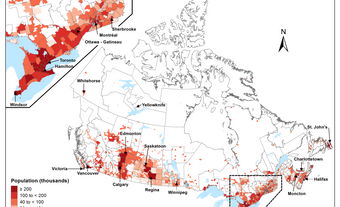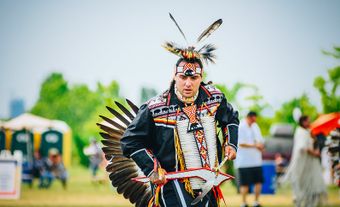If you look at a map of Canada, the number of place names can be overwhelming. Whether or not these places are considered municipalities depends on legislation specific to the province or territory in which they are located. Depending on the number of people who live there, municipalities may be called a number of names, including city, town, village or hamlet.
Most Canadian municipalities have thousands of residents. There are 11, however, that have 10 or fewer people.
This list is largely based on Statistics Canada’s 2016 census, as well as reliable information from other sources. It does not include “unorganized” communities, “designated places,” or reserves, as these are governed by larger municipalities, or in the case of reserves, the federal government.
1. Saint-Louis-de-Gonzague-du-Cap-Tourmente, QC: 2 Residents
In 1663, bishop François de Laval established the Séminaire de Québec, a Catholic theology school. To avoid paying taxes to the parish of Saint-Joachim, the seminary formed its own parish. Saint-Louis-de-Gonzague-du-Cap-Tourmente was established in 1916. While the 2016 census listed five residents in the parish municipality, more recent sources list just two.
2. Tilt Cove, NL: 4 Residents
Founded as a fishing village, Tilt Cove became a boomtown when a copper mine opened in 1864. The mine closed and reopened several times during the 20th century, and the town’s fortunes fluctuated with it. Its population peaked at 1,500 residents.
As of the 2016 census, Tilt Cove has just four residents. The mayor and town clerk are married, and its two councillors are the clerk’s brother and his wife. Municipal services include two street lights, water, garbage collection, and snow clearing. The mayor and clerk run a museum in their home.
3. Town of Dorval Island, QC: 5 Residents
Many Canadians will recognize the name Dorval, Quebec, home to Montreal’s international airport. Less known is the Town of Dorval Island, just a short ferry ride into the St. Lawrence River. It has just five permanent residents, but about 50 voters, as property owners are allowed to cast ballots. The town merged into the City of Montreal in 2002, but regained its independence in 2006.
4. Northern Settlement of Missinipe, SK: 5 Residents
The entire north half of Saskatchewan is considered a single municipality, the Northern Saskatchewan Administration District. While the District handles many services, “Northern Settlements” have a chair and members, as opposed to a mayor and council.
Popular as a canoeing location, Missinipe’s name is a Woodland Cree reference to the Churchill River.
5. Hunter’s Point, QC: 10 Residents
The Anishinabek living at Hunter’s Point are one of five First Nations in Quebec who have never been allotted a reserve. Since the mid-19th century, they have moved multiple times, displaced by logging, disease and encroachment. In the early 1900s, they settled at Wolf Lake. They renamed themselves Mahingan Sagahingan Anishinabek or Wolf Lake First Nation. In the 1940s the First Nation moved again, this time settling at Hunter’s Point. Most members of the Wolf Lake First Nation live in Kipawa or Témiscaming, returning to Hunter’s Point seasonally. (See also Reserves in Quebec.)
6. Leslie Beach and Greig Lake, SK: 10 Residents Each
For some communities, the date of the census makes a big difference. Saskatchewan’s resort villages grow during the summer, when cottagers arrive. On May 10, the date of the 2016 census, both Leslie Beach and Greig Lake tallied 10 residents. But come the summer, their populations grow with cottagers. An elected council oversees by-laws, building permits, and zoning.
7. Johnsons Crossing, YK: 10 Residents
During the Second World War, the US Army built the Alaska Highway through the Yukon. In 1947, Bob Porsild, a Yukon pioneer and tradesman, bought an American army campsite at Johnsons Crossing. With his family, he turned a quonset hut into a cafe, before adding a lodge. The motel and restaurant remain in operation to this day, and are joined by an RV park.
8. Point Alison, Kapasiwin, and Castle Island, AB: 10 Residents Each
Similar to Saskatchewan’s resort villages, summer villages are unique to their province, Alberta. By withdrawing from the surrounding municipality, cottagers can have a different tax rate and different services than their rural neighbours. Three of Alberta’s 51 summer villages have just 10 residents each. Since 1995, no new summer villages have been allowed to incorporate.

 Share on Facebook
Share on Facebook Share on X
Share on X Share by Email
Share by Email Share on Google Classroom
Share on Google Classroom



